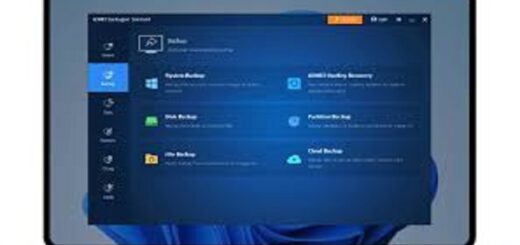How to Craft Unforgettable Virtual Presentations: Tools and Tactics for Remote Audience Engagement
Digital-first operations have made virtual presentations a crucial component of professional success across all industries. The vital skill for professionals delivering webinars, client pitches, and remote workshops includes engaging and holding the audience’s attention. A basic Zoom setup alone will no longer provide the desired impact—attendees require interactive tools combined with strategic techniques, along with persona-centred engagement, for your presentation to leave them truly inspired.
The following content will guide you through three key virtual delivery enhancement techniques, identifying common mistakes and offering insights from professional case studies. Under this section, we focus on dynamic polling with Mentimeter and collaborative whiteboarding on Miro to discover the optimal methods for maintaining audience engagement and enhanced participation.
3 Common Virtual Speaking Pitfalls to Avoid
Professional speakers sometimes encounter difficulties when trying to engage their virtual audience. Three common virtual presentation difficulties, together with their solution, include:
- Lack of Engagement: Virtual attendees may lose their connection to presentations when they feel detached. A combination of interactive polls and live Q&A sessions, and breakout rooms should replace standard monologues when you aim to generate audience participation. Mentimeter and Zoom Breakout Rooms enable participant engagement through active contributions, so people stay deeply involved in the discussion.
- Technical Issues: Poor audio quality combined with video delays and screen-sharing failures can easily ruin a presentation, no matter how well-planned it originally was. Begin with an advanced technical evaluation, followed by maintaining a stable internet connection and having prepared backup procedures to prevent disruptions. A professional delivery depends on selecting reliable streaming software in combination with high-quality microphone technology.
- Overloading Slides: Too many visual elements and too much written information on slides create confusion for your viewers. Your slides must present simple information accompanied by striking visuals, which reduce text content for the main message delivery. With Miro and Canva, users can easily create professional-quality presentations that maintain easy readability.
The correct methods of engagement, combined with suitable tools and avoidance of standard delivery traps, will enable you to create memorable virtual presentations.
Best Free/Paid Tools for Audience Interaction
To enhance audience participation in virtual presentations, the implementation of active participation tools remains necessary. Several powerful tools exist for enhancing engagement in virtual presentations, though these include:
- Mentimeter (Free/Paid): Through live polls with quizzes and word clouds, presenters can produce interactive and data-driven presentations that involve their audience. The tool provides effective feedback collection for immediate crowd response while supporting active, real-time participation.
- Miro (Free/Paid): Miro serves as an exceptional collaborative whiteboard platform that leverages team-based activities to support visualization and allows detailed idea delivery via highly interactive means.
- Kahoot! (Free/Paid)The inclusion of quizzes and challenges in your presentation through gamification will maintain audience engagement. The educational game platform Kahoot! serves thousands of organizations when delivering training content because it enables both interactive learning experiences and participant engagement.
- Zoom Breakout Rooms (Free/Paid): Attendees should participate in smaller breakout groups to improve meaningful discussions that enable deeper conversations while promoting interaction between attendees. In large virtual events, breakout rooms enable users to experience personal-level engagement.
A combination of intentional tool selection allows presenters to boost audience memorability and foster meaningful interactions, which results in effective virtual event impact.
Gathering Valuable Feedback For Engagement
Audience feedback plays a crucial role in the success of virtual presentations by transforming passive viewing into interactive discussions. Game developers rely on user insights to refine their products, ensuring better performance and engagement before launching them to the market. Various platforms allow a diverse range of gamers, from casual players to dedicated enthusiasts, to test pre-release versions of games while being compensated for their evaluations. This process helps developers identify areas for improvement, optimize gameplay mechanics, and enhance the overall user experience. Check out the test games for money opportunities at Pawns.app because the platform includes worthwhile tests and assessments that boost engagement between presenters and viewers during virtual sessions.
Why It Works for Virtual Presentations:
- Interactive feedback loops enhance audience participation – Interactive feedback loops enable audience participation through real-time engagement tools such as polls and surveys, and interactive Q&A options, which replace passive listening with dynamic discussions. The digital tools of Slido and Mentimeter enable speakers to collect spontaneous feedback directly, which helps create customized interactive discussions.
- Gamification elements make learning more engaging – Standard presentations become immersive experiences through the inclusion of game mechanics that combine quizzes with challenges and rewards to create active learning environments. The presentation tools Kahoot! and Quizizz offer presenters the ability to build competitive learning spaces that energize audience members to keep participating.
- Real-time insights help speakers refine their delivery based on audience reactions – Dial-based audience responses enable speakers to improve their delivery through real-time viewer responses – Examining viewer feedback enables presenters to modify their delivery pace and content along with their presentation style. Webinar platforms perform sentiment analysis while virtual meeting tools display live reaction emojis, which help presenters adjust their methods.
- Boosting engagement through interactive feedback mechanisms – Virtual presentations enhance participant engagement using seamless feedback tools, which enable audience members to feel heard and actively participate. Through a properly designed active participation tool, the presenters can convert the normal lecture into an immersive and memorable collaborative session.
Presenters who build interactive feedback methods boost audience participation while delivering a more immersive presentation experience.
Final Thoughts
Virtual presentation excellence today requires the smart application of strategic tools and audience-oriented approaches, and adaptability in volatile environments. Cutting out passive delivery mistakes, coupled with an absence of technical details and visual clutter, builds an impressive final product. Virtual presentations become impactful interactive experiences through the use of Mentimeter, Miro, and Zoom Breakout Rooms combined with audience-engaging gamification and real-time feedback loops.
Any virtual presentation that impacts people stands above fact-sharing alone since it connects audiences on a personal level. Your ability to engage audiences while employing innovative tools, along with audience-specific approaches, ensures virtual audiences will not only stay focused but remember your presentation deeply. The future of public speaking exists now, so learn these strategies to make each online speaking opportunity result in inspiring presentations.


